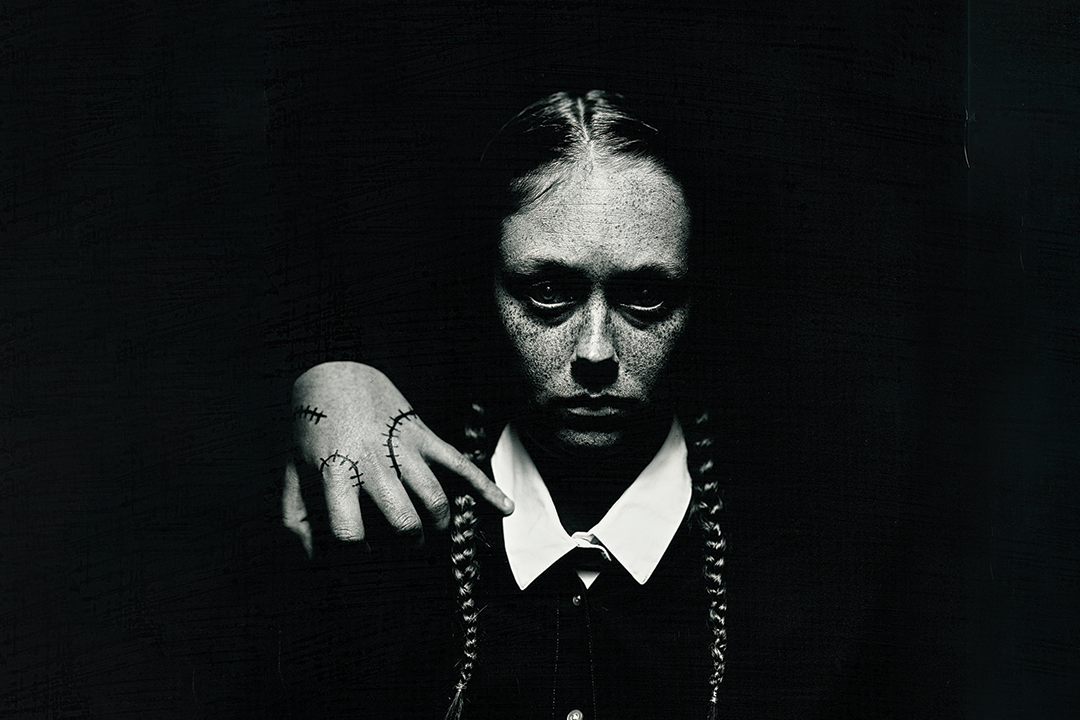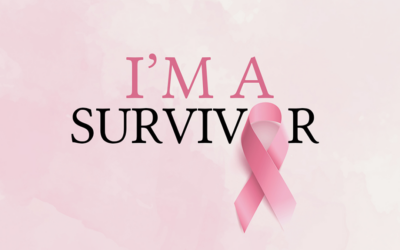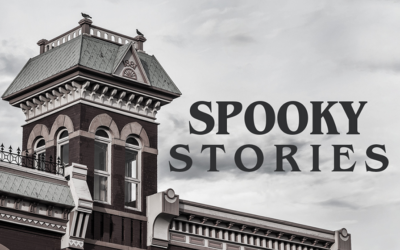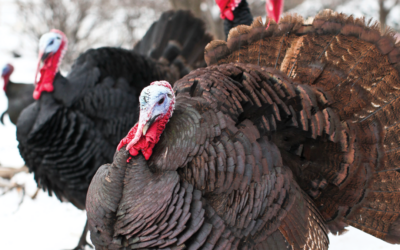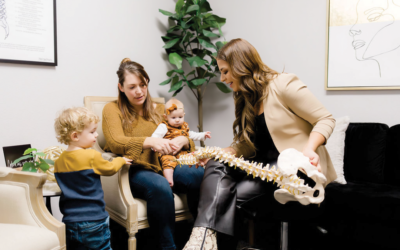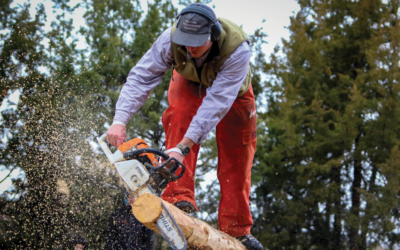At Porkpie Photography’s studio in Timnath, there’s no clicking shutter, memory card or instant gratification.
The business specializes in tintypes, a photographic process dating back to the mid-1800s. Instead of digital cameras, owner Chad Shryock uses wooden equipment, antique lenses and Victorian-era chemistry.
His wife Richelle helps run Porkpie Photography, which caters to people looking for something vintage and even a little eerie. The Shryocks have seen the business boom in the past year, thanks to word of mouth and a growing buzz on social media.
“We get all kinds of people,” Richelle says. “Some are photographers themselves who want to learn the process, and others are young adults who saw us on TikTok. We’ve had couples come in for date nights, families doing keepsake portraits and even tattoo artists who send their clients our way.”
A single exposure
Chad works with a 19th-century photographic method called wetplate collodion, which involves coating an aluminum plate with chemicals, sensitizing it in a silver bath and then loading it into the camera for a single, carefully timed exposure. The subject must hold completely still for a few minutes as Chad opens the lens and lets the light hit the plate.
Then he goes to the darkroom, hidden by a revolving door, where the real magic happens.
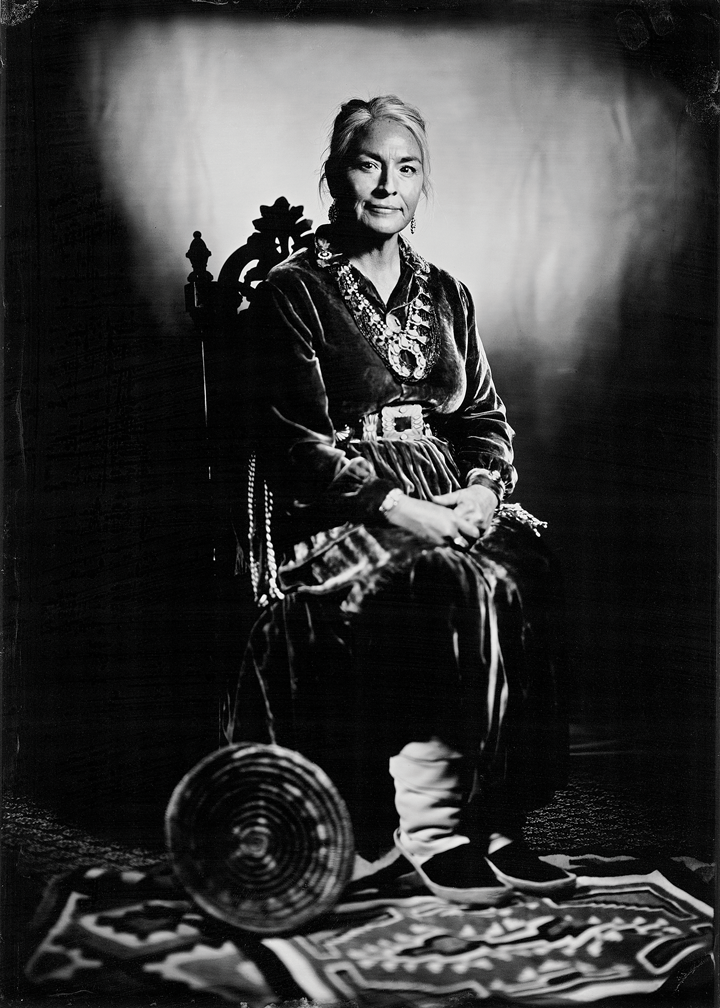
Tommi Sue. Photo by Porkpie Photography.
“When I pour the developer on the plate, that’s when the image starts to appear,” he says. “I never know exactly how it’s going to look. You’re watching this ghostly photo slowly emerge, and it’s like a little magic trick every time.”
The effect is mesmerizing. Blue eyes turn silvery white, red lipstick darkens to black and faint freckles show up as inky constellations. The process captures a mirror image: what we see when we look at ourselves, not what a camera sees. The final tintype is a physical object made of metal that’s meant to last centuries.
“These could end up in antique stores 200 years from now,” Chad says. “They’re not going to vanish if something ever happens to the cloud.”
Discovering tintypes
Tintypes rose to popularity in the 1850s and were widely used throughout the Civil War era, when soldiers in uniform had their photos taken to send home to their families. President Lincoln’s portrait on the $5 bill was originally taken using a tintype.
But the invention of Kodak’s point-and-shoot camera in the late 1880s—with its slogan, “You push the button, we do the rest”—put most tintype photographers out of business.
“In the 1980s, there were supposedly only about five people left in the world who still knew how to do it,” Chad says. “Now there are maybe a thousand worldwide but fewer than 500 who do it regularly. In Colorado, it’s a very small community.”
Chad got hooked on tintypes in 2015 after a holiday visit to his parents’ house in Indiana. His father, a Civil War buff, had a library full of books, and in one of them, Chad saw old soldier portraits that sparked his curiosity.
He dug in deeper and began reading 19th-century photography manuals, watching YouTube videos and ordering chemistry. The first plate he ever made in 2016 turned out surprisingly well, and he’s been obsessed ever since.
“I’ve always been into the arts and loved tinkering with things,” says Chad, who has a degree in electrical engineering. “The photographer in me loves the image, but the engineer in me loves the process.”
During the pandemic, he even built a 24-by-24-inch camera from scratch, hoping to take giant portraits one day. Richelle found an antique lens in a shop that would work with it, and now they’re testing the chemistry needed for the larger format.
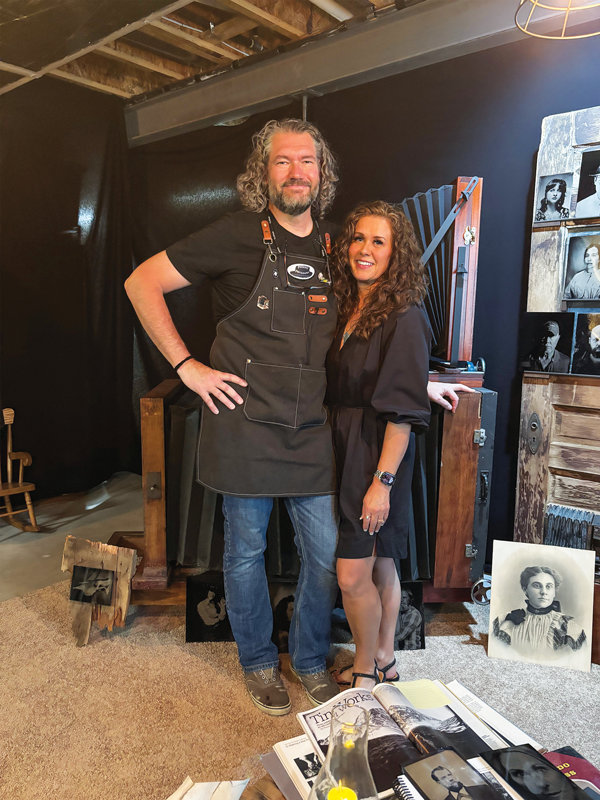
Chad and Richelle Shryock
Memories made
Porkpie Photography—which gets its name from the porkpie hats early photographers used as lens caps—offers more than just spooky-cool photos. A typical studio session includes a bit of history, a darkroom demonstration and a few keepsake images in sizes ranging from 5×7 to 8×10 inches.
For Halloween, Chad uses a coffin-shaped metal plate and lets clients pose with a skull or with their arms crossed, Victorian-style. The couple has also done pop-ups at breweries, museums and wedding receptions.
“One bride told us it was the highlight of her whole wedding,” Richelle says. “Instead of dancing, people were gathered around, watching us work.”
For Chad and Richelle, it never gets old.
“I love that it’s a process most people will never see in their lifetime,” Chad says. “Every image is one of a kind. There’s no negative, no editing, no do-overs. You get this beautiful, raw version of yourself that could outlive your great-grandkids.”


